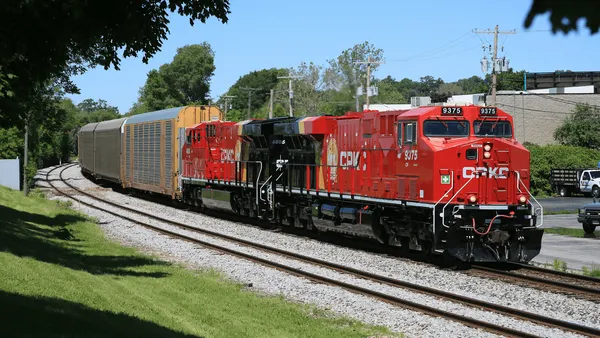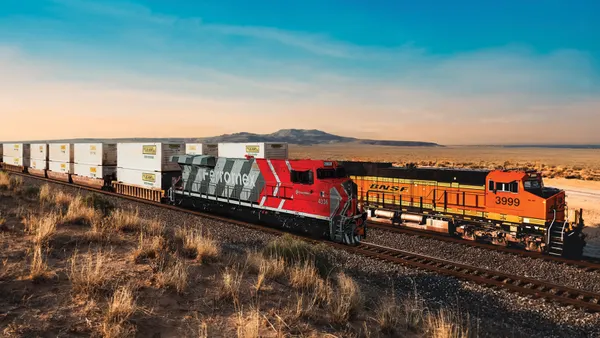Dive Brief:
- Union Pacific is through the first of three stages laid out in its "Unified 2020 Plan" — the railroad's plan to transition to precision scheduled railroading (PSR), which began in October.
- Although initial network rationalizations are largely complete, "these changes are really just a foundation for the great opportunities we see going forward like our terminal rationalization," said CEO Lance Fritz on the railroad's second-quarter earnings call.
- Volume for the railroad was down 2% in the second quarter, largely because of weather-related disruptions. Union Pacific's East-West line, which usually serves 50 trains per day, was washed out for 13 days due to record flooding in the Midwest. "Our ability to quickly recover operations after severing the east-west artery of our network is unprecedented," Kenyata Rocker, executive vice president of marketing and sales, said on the call.
Dive Insight:
Somewhat to the dismay of analysts, Union Pacific has described its transition to PSR as a series of incremental improvements, and on Thursday's call we learned that tune did not change after PSR veteran Jim Vena, who retired from his position of COO at Canadian National in 2016, came on board as COO in January.
"The last time I spoke with you I had only been on the job about 10 days," said Vena on the call. "Since then I've spent a lot of time in the field getting familiar with our network and evaluating Unified Plan 2020 ... we completed our initial transportation plan changes and they are delivering good results. But I will tell you there's a lot of opportunity ahead of us to further improve asset utilization and network efficiency."
In January, just four months after beginning the transition to PSR, executives described conversations with customers as difficult as overall inventory dropped and service changed. Vena said there is more where that came from as the railroad seeks to reach an operating ratio (OR) below 61% this year. The other KPIs the railroad is tracking include:
- Freight car terminal dwell
- Freight car velocity
- Train speed
- Locomotive productivity
- Workforce productivity
- Car Trip plan compliance
Eliminating hump yards in urban areas with multiple facilities is one example of rationalization that can bring down dwell and therefore increase velocity. The railroad has also ceased work on a planned rail yard in Brazos, Texas, relocating the funds for that project toward other yards. The railroad posted positive change for all of these metrics except workforce productivity.
Still, despite the past and forthcoming closures, Vena said rationalizations are strategic, and closures will only happen when increased train speed is the likely result.
"I don't wake up in the morning, and say, I'm going to shut down another hump yard. If they can save on the touch points, if it speeds up the railcars and if it makes sense that it's a cheaper model to shut down the hump yards," said Vena, who added that he has a plan for future closures, and they will be announced one by one as they close.
Vena said he is still "refining" the schedule and the ongoing review is still "significant."
Fritz said the railroad is on track for a sub-61% operating ratio this year, and this could drop to sub-60% next year despite the railroad's incremental approach. He said he can even imagine a 55% operating ration in the years after 2020. When pressed for a timeline for reaching that figure, Fritz said: "let's get below 60% first and we'll talk about it."














